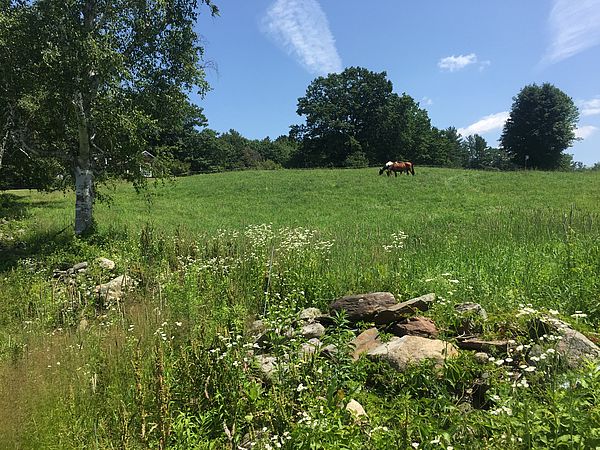Jack Pratt of Walpole, New Hampshire, starts this year off right, knowing that last year’s resolution came true. Sargent Hill Farm, located on a dead-end dirt road, is a quiet spot with scenic views of Vermont. By going through the process of land conservation with the Monadnock Conservancy, Jack permanently protected 42 acres.
A ‘Dream Property’
Decades ago, when Jack Pratt arrived from California with his three dogs in the back seat of the car, he decided he’d found the perfect place to retire.
The property includes open fields, stone walls, maple trees, forested slopes, a stream, and two ponds. It’s a place with a lot of country character and charm, and now Jack can relax knowing that future generations can continue to enjoy the beauty and solitude.
“[The land’s] isolation makes it a dream property,” Jack said. “I had no intention of seeing this land developed. I’m glad to conserve it.”
Over the years, he’s had more dogs, chickens, and a couple of peacocks. His nephew Steve Flessa; Steve's wife, Bobbi Flessa-LaRoche; and their son, Justin, together moved in next door and pasture a couple of horses here.
The now-conserved property, located on the west side of Reservoir Road, is mostly wooded, but recently about 3 acres were cleared to expand the views.
“We were so excited about this project because the land is so scenic. It has great views to the west, where you can really see the hills of Vermont,” said Monadnock Conservancy Deputy Director Stacy Cibula.
Connecting Other Lands
The property abuts Hooper Forest, a 200-acre town property. It is also in proximity to the conserved Watershed Town Forest, the Hubbard conservation easement, the conserved Reservoir Town Forest, and the Conservancy’s Skofield property.
One of the Conservancy’s goals is to expand upon other properties whenever possible. “It’s important to us to protect land that is near other conserved lands. This property fits that bill,” Stacy said.
By linking together conservation lands into blocks of hundreds of acres, or conservation corridors, wildlife benefit from being able to roam freely with little to no interference from humans.
